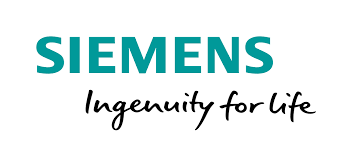South Korea Smartphone Sensor Market - Industry Analysis and Forecast (2025-2032)
South Korea Market size was valued at USD 53.56 billion in 2024 and the total South Korea South Korea Market size is expected to grow at a CAGR of 15.2% from 2025 to 2032, reaching nearly USD 166.15 billion by 2032.
Format : PDF | Report ID : SMR_2585
South Korea Smartphone Sensor Market Overview:
Sensors is the device which is used in smartphones to detect various aspects of environment. They sense data for which they are made and works according to that. Technological developments and a high rate of smartphone use are driving robust growth in South Korea smartphone sensor industry. Sensors that improve user experience include accelerometers, gyroscopes, fingerprint scanners, ambient light sensors, and image sensors, among many more that are included in this Smartphone Sensor market. Innovation in sensor technology is being driven by the growing need for biometric authentication, augmented reality (AR) applications, and high-quality camera performance. South Korean firms, like as Samsung and LG, are in a good position to take advantage of these chances if they keep pushing the boundaries of sensor technology innovation. South Korea smartphone sensor market is expected to continue as a major centre for technological progress, providing substantial growth potential for both domestic and foreign businesses, as the demand for cutting-edge smartphone features grows globally.

To get more Insights: Request Free Sample Report
South Korea Smartphone Sensor Market Dynamics:
Driving Forces Behind the Growth of the Smartphone Sensor Market in South Korea
The development of smartphones technologies has determined the abundant and prevalent computation. An activity recognition system using smartphone sensors enables continuous monitoring of human behavior and assisted living. The need for better user experiences, rising smartphone use, and technological improvements are all driving considerable growth in South Korea's smartphone sensor industry. The quick development and integration of cutting-edge sensors, such accelerometers, gyroscopes, fingerprint scanners, and ambient light sensors, is one of the main reasons behind this increase. Smartphones are using these sensors more often to provide better features including better camera performance, augmented reality (AR) experiences, and biometric identification. Samsung, a well-known smartphone maker in South Korea, has led the way in incorporating cutting-edge sensors into its models.
- For example, ultrasonic fingerprint sensors are used in the Galaxy S series, which offers more accurate and secure authentication than conventional optical sensors
Additionally, the increasing use of 5G technology in South Korea is also boosting the need for sensors that accommodate advanced functions and uses. The pattern is expected to persist, positioning South Korea as a crucial market for smartphone sensor advancement and growth.
There are several opportunities in the South Korean smartphone sensor industry, especially with the development of 5G technology. New opportunities for sensors supporting sophisticated features like real-time data processing, immersive AR/VR experiences, and improved mobile gaming are being opened up by the rollout of 5G networks. South Korea boasts a high smartphone penetration rate. As the home of Samsung, a leading smartphone giant, these devices are deeply embedded in daily life. Smartphones in South Korea are essential for a range of activities, from online shopping and communication to mobile ticketing and payments, influencing nearly every facet of the average person's routine.
South Korea Smartphone Sensor Market Segment Analysis:
By Sensors Type, Image Sensor held XX% share in 2024 for the South Korea Smartphone Sensors Market. Image sensors transform light into electronic signals, allowing smartphones to take high-quality photos and videos. The focus for smartphone manufacturers has shifted towards developing advanced image sensors owing to the growing need for better camera performance. Thanks to the increasing consumer interest in improved camera quality, image sensors are projected to stay a prominent source of innovation and growth in South Koreas smartphone sensor market. Samsung, a major player in this sector, has been leading the way in developing new image sensor technology.
- June 27, 2024 – Samsung Electronics Co., Ltd., a world leader in advanced semiconductor technology, announced three new mobile image sensors designed for both main and sub cameras in smartphones: the ISOCELL HP9, the ISOCELL GNJ and the ISOCELL JN5.
The sensor uses cutting-edge pixel-binning technology to improve low-light performance by merging smaller pixels, which is essential for capturing images and videos in the dark. Samsung's high-end smartphones are equipped with dual-pixel technology, which enhances autofocus speed and accuracy to produce clearer images and videos.
South Korea Smartphone Sensor Market Scope:
|
South Korea Smartphone Sensors Market |
|
|
Market Size in 2024 |
USD 53.56 billion. |
|
Market Size in 2032 |
USD 166.15 billion. |
|
CAGR (2025-2032) |
15.2 % |
|
Historic Data |
2019-2024 |
|
Base Year |
2024 |
|
Forecast Period |
2025-2032 |
|
Segments
|
By Sensor Type
|
|
By Operating Systems
|
|
|
By Application
|
|
South Korea Smartphone Sensor Market Key Players:
- Samsung Electronics
- LG Innotek
- SK Hynix
- MCNEX
- Others
Frequently Asked Questions
Ans. The need for better user experiences, rising smartphone use, and technological improvements are all driving considerable growth in South Korea's smartphone sensor industry.
Ans. South Korea Smartphone Sensors Market, new opportunities for sensors supporting sophisticated features like real-time data processing, immersive AR/VR experiences, and improved mobile gaming are being opened up by the rollout of 5G networks.
Ans. The Market size was valued at USD 53.56 Billion in 2024 and the total Market revenue is expected to grow at a CAGR of 15.2 % from 2025 to 2032, reaching nearly USD 166.15 Billion.
Ans. The segments covered are Sensor Type, Operating Systems, and Application.
1. South Korea Smartphone Sensors Market: Executive Summary
2. South Korea Smartphone Sensors Market: Competitive Landscape
2.1. Stellar Competition Matrix
2.2. Competitive Landscape
2.3. Key Players Benchmarking
2.4. Market Structure
2.4.1. Market Leaders
2.4.2. Market Followers
2.4.3. Emerging Players
2.5. Consolidation of the Market
2.6. Smartphone Import and Export Analysis
3. South Korea Smartphone Sensors Market: Dynamics
3.1. Market Trends
3.2. Market Drivers
3.3. Market Opportunities
3.4. Market Challenges
3.5. PORTER’s Five Forces Analysis
3.6. PESTLE Analysis
3.7. Strategies for New Entrants to Penetrate the Market
3.8. Regulatory Landscape
4. South Korea Smartphone Sensors Market Size and Forecast by Segments (by Value USD Billion and Volume in Units)
4.1. South Korea Smartphone Sensors Market Size and Forecast, by Sensor Type (2024-2032)
4.1.1. Biometric Sensors [Fingerprint Sensors, Face Recognition, Iris Scanners]
4.1.2. Image Sensors [CCD and CMOS]
4.1.3. Accelerometer
4.1.4. Gyroscope
4.1.5. Heart Rate Sensor
4.1.6. Magnetometer
4.1.7. GPS
4.1.8. Others
4.2. South Korea Smartphone Sensors Market Size and Forecast, by Operating Systems (2024-2032)
4.2.1. iOS
4.2.2. Android
4.2.3. Others
4.3. South Korea Smartphone Sensors Market Size and Forecast, by Application (2024-2032)
4.3.1. Entertainment & game
4.3.2. Health & Fitness
4.3.3. Security
4.3.4. Navigation
4.3.5. Photography
4.3.6. Environmental Monitoring
4.3.7. Others
5. Company Profile: Key players
5.1. Samsung Electronics
5.1.1. Company Overview
5.1.2. Financial Overview
5.1.3. Business Portfolio
5.1.4. SWOT Analysis
5.1.5. Business Strategy
5.1.6. Recent Developments
5.2. LG Innotek
5.3. SK Hynix
5.4. MCNEX
5.5. Others
6. Key Findings
7. Industry Recommendation
8. South Korea Smartphone Sensors Market: Research Methodology
















